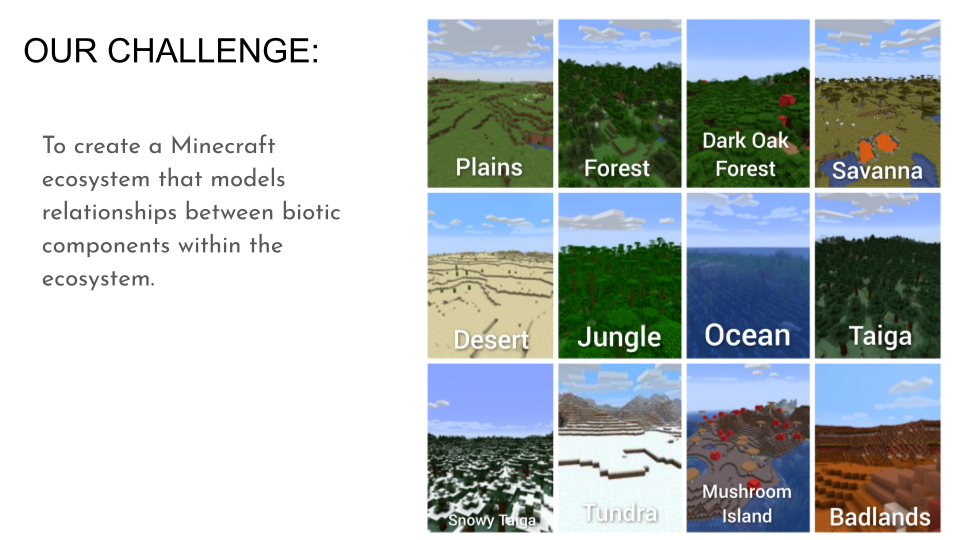Minecraft Meets Cardboard: Building Ecosystems with STEAM
- markmarshall
- May 29
- 2 min read
Updated: Sep 29
Last year, I co-designed a project that quickly became a highlight of the year—a hands-on, highly engaging blend of Minecraft, cardboard construction, math, and science. It was the kind of STEAM project that not only excited students but also checked all the boxes for curriculum connections.



In the past, our Grade 5 students ended the year with a skyscraper volume project. This time, though, we wanted to try something different. Having used MinecraftEdu in schools for nearly 15 years, I knew how powerful it could be for learning. But I also wanted students to extend their thinking beyond the screen—to connect the digital world to the physical world.
Starting with the Standards
Like any well-structured STEAM project, we began with curriculum alignment. Students were wrapping up a science unit on ecosystems and had just completed a math unit on volume.
The challenge became:
How might students create a Minecraft ecosystem that models the biotic components within a biome?
Framing the project this way ensured the learning wasn’t just about building in Minecraft—it was rooted in science content, reinforced math skills, and invited authentic inquiry.


The Process
Research & Planning: Students explored food webs and selected a Minecraft biome.
Digital Design: Teams built an animal in MinecraftEdu connected to their biome’s food web.
Math Integration: They calculated the volume of their animal and practiced constructing 3D nets. (This was challenging—so we scaffolded with paper nets first.)
Cardboard Construction: Each group received two sheets of two-ply cardboard. Using tools like zipsnips, canary cutters, and scissors, they measured, cut, and assembled their models.
Finishing Touches: Students painted and displayed their animals, creating a collaborative, large-scale model of an ecosystem.
Why This Worked for Students
This project worked because it tapped into student interest in Minecraft, but didn’t stop at the screen. By requiring students to translate digital designs into physical models, they had to apply spatial reasoning, precision, and perseverance. It also built collaboration—teams had to plan carefully, problem-solve, and divide tasks.


Why This Worked for Teachers
From a teaching perspective, this project:
Reinforced math concepts (volume, measurement, 3D nets) in a meaningful context.
Deepened science learning (ecosystems, biotic/abiotic factors, interdependence).
Integrated design thinking and creativity with accessible materials.
Showed how digital tools like MinecraftEdu can launch hands-on, inquiry-based projects.
Takeaway
The best part? The project was adaptable. Whether you have access to MinecraftEdu or not, the framework holds: start with a science concept, link it to a math standard, and challenge students to design and build models that bring abstract ideas to life.
For us, it was a reminder that STEAM projects don’t need to be flashy or tech-heavy. What matters most is the combination of clear learning goals, authentic challenges, and space for creativity. When students see their digital ideas take shape in the physical world, the learning sticks.




Comments